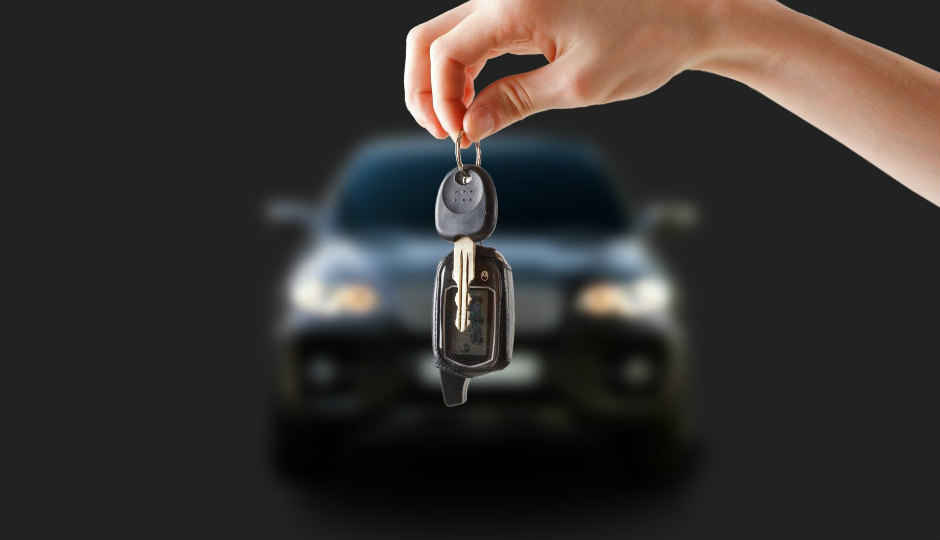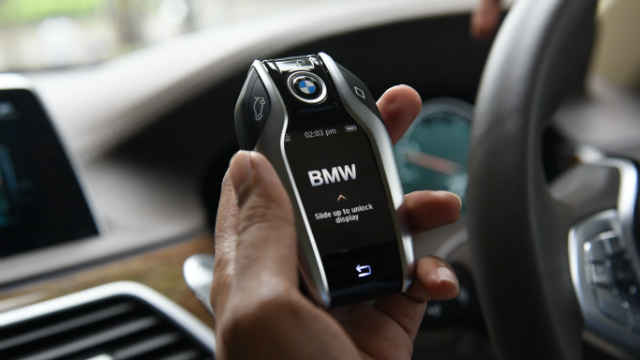The end of car keys is here, and here’s why it’s necessary

Your smartphone is set to usurp yet another age-old practice, all for good innovation.
Automotive technology has been progressing in leaps and bounds – that much has always been clear to us, who have followed this place with close inspection every day. Most of the launches in the field of automobiles involve more participation from technology giants now, than ever before. We’re talking about connecting our cars over billions of bits via cloud networks, installing computers that can control a car’s movements, presenting higher resolution displays, fancier maps and premium audio equipment, all of which was once unheard of in the automobile space.
However, one particular bit that has remained surprisingly (and rather annoyingly) static in terms of innovation, is the car key. It has been decades now, since the car key has remained practically the same. Many mainstream vehicles have transitioned along to a ‘keyless’ entry and driving status, but even they come with the crucial caveat of you having to carry a physical key fob along with you. That’s not truly keyless, is it?
How smart can keys be?
Or rather, how smart do they even need to be? Would innovating around the car key – the primary point of interaction, ingress and activation between a car and its owner, prove futile? After all, the billions of car owners around the globe is actually used to carrying the key around wherever they go, and it is essentially a conditioned reflex now. The present form of the key also seems to be quite non-intrusive in terms of the way it operates. Should, then, any form of innovation be even made?
Tesla certainly thinks there should be. The company, spearheaded by the mercurial Elon Musk, has presented the Model 3 electric sedan to the world. The Tesla Model 3 can easily be related to being the first glimpse at the car of our immediate future – all electric, semi-autonomous driving capabilities, minimalistic interior focused on comfort and peace of mind, and a powerful drivetrain make the Tesla Model 3 an alluring prospect. Adding to that, is the fact the the car does not have a key, at all.
The smartest car key around
This somewhat brings us back to the original question – how smart can keys be? They are, after all, only keys. Perhaps looking at the smart key fob of the BMW 7 Series gives a fair idea of exactly how smart can car keys be. The smart key fob has five physical buttons, and a pixel-dense, resistive, multi-colour touchscreen display that shows a plethora of options for the user to ponder upon. There are five windows – the first shows the locking status of the car, the second shows the power status of the windows and lights, the third shows the amount of fuel left and the total traveling range that the car still has, the fourth enables a remote pre-timer for the air conditioner, and the fifth (and the fanciest of ‘em all) allows the owner to start the engine from outside and drive the car out of a tight spot, without even being inside it.
On the face of it, that is quite a smart key. You can simply tap on the locking screen once to ensure that the doors, bonnet and boot are all locked, the same applies for the lights, and having a remote mileage meter ensures that you can keep a tight check on any suspected fuel misuse. The air-conditioning pre-timer allows you to switch on the air conditioner of the car at a time of your choice, so that you enter the cooled (or heated) comfort of your car directly from the same comfort of your home. The last function is arguably the most useful. We often have to park our cars in tight spots. In case you’ve done that, and happen to be worried about scratching the precious paint on your limo, you can simply switch on the car from outside and ensure that it rolls out of the spot smoothly, without any hassle.
A smart car key, hence, makes quite a bit of sense from the usage point of view. But, there are downsides to this as well.
The cost of (in)convenience
Since this key has a display and connects over wireless networks, it also has a mobile power source, or a battery. That, in turn, gives your already overloaded gadget arsenal and ever-engaged power sockets yet another device to charge. You need to ensure that you either charge the key when you’re at home, or remember to carry its cable (which still follows the universal microUSB standard) for charging it while travelling.
"More work to keep up with the 'smart'ness certainly appears to be counter-productive"
In case you do not remember to do so, and happen to have run out of charge on the smart key, you now have the standard, physical key. The cost of this (in)convenience is that you now have an additional device to charge, and also an additional object to carry around in your pockets. Seeing how the point of smart technology is to ease the load of our everyday lives, rid tedious habits and ease the entire process of mobility, having more work to keep up with the ‘smart’ness certainly appears to be counter-productive.
Good riddance, keys!
It is, hence, Tesla’s grand strategy to swing the balance back to being productive, and completely get rid of the key. The Tesla Model 3 does not have a key of its own. Instead, it uses the one gadget that everyone who owns a car certainly owns – the smartphone. A mobile application is coded to use the phone’s Bluetooth connection, but over Bluetooth LE (Low Energy), to unlock the car. The apps use individual codes and industry grade encryption to ensure security, and also make sure that no one but you, and only you, can have access to the car via the unique code.
First notable completely keyless car – the Tesla Model 3
This makes the new mechanism as good as being a physical car key. Alongside, it provides a much smarter and familiar interface by utilising a mobile app. All the features that the BMW smart key fob comes with can be integrated into the app, and even more features can be added on the go via over-the-air updates. It also streamlines the usage of the number of devices, and you no longer need to carry additional car keys along with you. The connectivity itself is established with a Bluetooth receptor node installed in the car, and the low energy connectivity means you may even be able to unlock the car and start it up, when your phone battery is as low as 2%.
In the odd occasion where your phone is completely out of charge, Tesla has designed two backup NFC cards for each car. Tapping it on the car will unlock it and allow the user to start up the electric motors, following which one can charge up their phone sitting inside the air. These cards would presumably be much less intrusive to carry around in comparison to physical key fobs.
The smart key, hence, is essentially the smartphone, and a specially coded mobile app utilising Bluetooth (a standard wireless connection that we use everywhere, every day) solves the conundrum of evolving smart technology against convenience of usage.
Looking forward
While a number of companies have evaluated completely keyless cars at some point of time, it is the Tesla Model 3’s keyless model that can truly begin the end of car keys. Going forward, our smartphone usage is going to increase manifold, and our always-connected lifestyles are bound to get even more connectivity thrown in. As a result, this smart key model stands the likeliest chance of seeing widespread adoption, particularly as the new crop of ‘smart’ cars start rolling out of production queues, beginning 2020.
Sometimes, as we see with car keys at least, innovation does not need to be radical. Sometimes, just like this, hitting the sweet spot is all about striking the right balance between technology and convenience. It is this rationale that makes us strongly believe, that the end of the physical car key, after over a century of unprecedented application, is finally here.






